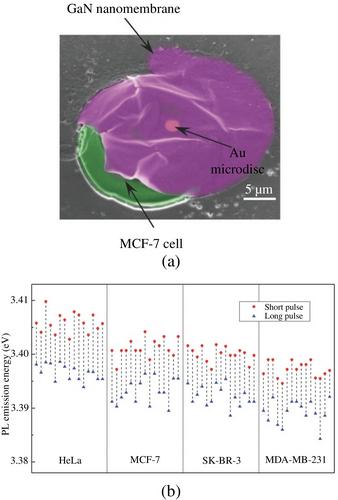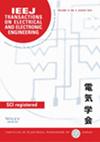下载PDF
{"title":"利用微/纳米温度计优势的细胞温度传感技术","authors":"Naoki Inomata","doi":"10.1002/tee.70091","DOIUrl":null,"url":null,"abstract":"<p>Understanding the mechanisms within cells is essential for advancing biophysical research and applications in medicine and materials science. Temperature, in particular, is a crucial physical parameter that governs the behavior of both cells and living organisms. Therefore, investigating cellular mechanisms through temperature monitoring is a rational approach. This review summarizes current methodologies for measuring the temperature of single cells, highlighting their principles, advantages, and limitations. Thermosensitive nanoparticles, which rely on the temperature dependence of fluorescent properties, enable localized temperature measurements and mapping, providing detailed insights into subcellular thermal behavior. Additionally, microfabricated thermometers, including traditional tools such as thermocouples and thermistors, as well as unique devices like mechanical resonant thermometers and gallium nitride nanomembranes, are highlighted as powerful methods for cellular temperature sensing. This review describes recent advancements in measurement techniques for temperature detection while presenting experimentally obtained cellular thermal properties that depend on the surrounding temperature. By providing an overview of current progress and open challenges, this review lays the foundation for future investigations into cellular thermodynamics, fostering a deeper understanding of the role of temperature and heat in cellular processes. © 2025 Institute of Electrical Engineers of Japan and Wiley Periodicals LLC.</p>","PeriodicalId":13435,"journal":{"name":"IEEJ Transactions on Electrical and Electronic Engineering","volume":"20 9","pages":"1326-1332"},"PeriodicalIF":1.1000,"publicationDate":"2025-07-03","publicationTypes":"Journal Article","fieldsOfStudy":null,"isOpenAccess":false,"openAccessPdf":"https://onlinelibrary.wiley.com/doi/epdf/10.1002/tee.70091","citationCount":"0","resultStr":"{\"title\":\"Cellular Temperature Sensing Techniques Leveraging Advantages of Micro/Nano-Thermometers\",\"authors\":\"Naoki Inomata\",\"doi\":\"10.1002/tee.70091\",\"DOIUrl\":null,\"url\":null,\"abstract\":\"<p>Understanding the mechanisms within cells is essential for advancing biophysical research and applications in medicine and materials science. Temperature, in particular, is a crucial physical parameter that governs the behavior of both cells and living organisms. Therefore, investigating cellular mechanisms through temperature monitoring is a rational approach. This review summarizes current methodologies for measuring the temperature of single cells, highlighting their principles, advantages, and limitations. Thermosensitive nanoparticles, which rely on the temperature dependence of fluorescent properties, enable localized temperature measurements and mapping, providing detailed insights into subcellular thermal behavior. Additionally, microfabricated thermometers, including traditional tools such as thermocouples and thermistors, as well as unique devices like mechanical resonant thermometers and gallium nitride nanomembranes, are highlighted as powerful methods for cellular temperature sensing. This review describes recent advancements in measurement techniques for temperature detection while presenting experimentally obtained cellular thermal properties that depend on the surrounding temperature. By providing an overview of current progress and open challenges, this review lays the foundation for future investigations into cellular thermodynamics, fostering a deeper understanding of the role of temperature and heat in cellular processes. © 2025 Institute of Electrical Engineers of Japan and Wiley Periodicals LLC.</p>\",\"PeriodicalId\":13435,\"journal\":{\"name\":\"IEEJ Transactions on Electrical and Electronic Engineering\",\"volume\":\"20 9\",\"pages\":\"1326-1332\"},\"PeriodicalIF\":1.1000,\"publicationDate\":\"2025-07-03\",\"publicationTypes\":\"Journal Article\",\"fieldsOfStudy\":null,\"isOpenAccess\":false,\"openAccessPdf\":\"https://onlinelibrary.wiley.com/doi/epdf/10.1002/tee.70091\",\"citationCount\":\"0\",\"resultStr\":null,\"platform\":\"Semanticscholar\",\"paperid\":null,\"PeriodicalName\":\"IEEJ Transactions on Electrical and Electronic Engineering\",\"FirstCategoryId\":\"5\",\"ListUrlMain\":\"https://onlinelibrary.wiley.com/doi/10.1002/tee.70091\",\"RegionNum\":4,\"RegionCategory\":\"工程技术\",\"ArticlePicture\":[],\"TitleCN\":null,\"AbstractTextCN\":null,\"PMCID\":null,\"EPubDate\":\"\",\"PubModel\":\"\",\"JCR\":\"Q4\",\"JCRName\":\"ENGINEERING, ELECTRICAL & ELECTRONIC\",\"Score\":null,\"Total\":0}","platform":"Semanticscholar","paperid":null,"PeriodicalName":"IEEJ Transactions on Electrical and Electronic Engineering","FirstCategoryId":"5","ListUrlMain":"https://onlinelibrary.wiley.com/doi/10.1002/tee.70091","RegionNum":4,"RegionCategory":"工程技术","ArticlePicture":[],"TitleCN":null,"AbstractTextCN":null,"PMCID":null,"EPubDate":"","PubModel":"","JCR":"Q4","JCRName":"ENGINEERING, ELECTRICAL & ELECTRONIC","Score":null,"Total":0}
引用次数: 0
引用
批量引用


 求助内容:
求助内容: 应助结果提醒方式:
应助结果提醒方式:


